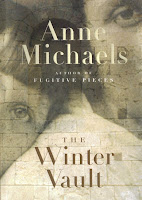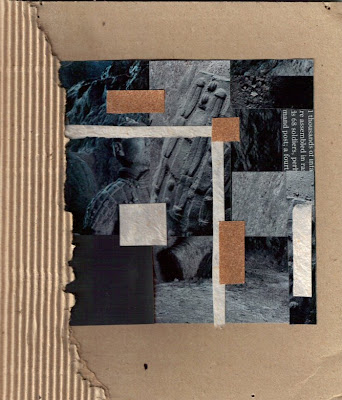
by Anne Michaels
McClelland & Stewart
2009
This book came to me six months ago in a large box with others I'd ordered. I'd read her first novel
Fugitive Pieces several years ago and was very moved by it. And it was adapted into an acclaimed major feature film a few years later.
The books went onto the shelf marked TBR, and I forgot about it until last week when I learned it had been nominated for the Giller Prize. I picked it up a few nights ago and haven't been able to put it down since.
This is a story of love and loss, personal loss and collective loss on a scale that is difficult to imagine. With a poet's intense imagery, Anne Michaels takes us with Jean Shaw and her engineer husband to Nubia as it is about to be inundated by the newly formed Lake Nasser. This experience reminds Jean of the villages that were likewise flooded by the construction of the St. Lawrence Seaway, several years before. What happens when villages like these, and cities (like Warsaw in WWII) are destroyed? How do people find ways to live and love after such events?
Fascinating and horrifying are the interwoven stories of displacement (whole towns that were displaced when the St. Lawrence Seaway was built in Canada, thousands of Nubian villagers lost their homes and civilization when the Aswan Dam flooded the Nile to form Lake Nassar, people who fled their homes to escape the Nazis.
Avery Escher is an engineer and Jean Shaw a student botanist. They meet in a dry river bed on the banks of the St. Lawrence River in Canada, witnessing the construction of the Seaway as it swallowed towns, homes, and lives. Now, at the edge of another world about to be inundated in the name of progress, much of what they most believe in is tested. Avery looking out upon a space his father, also an engineer, created (or destroyed) by diverting a river; Jean, collecting native plant species along the banks in order to save them – and the memory of her mother’s garden.
In 1964, they settle into a houseboat on the Nile just below Abu Simbel. At the time of the building of the Aswam dam, Avery is one of the engineers responsible for the dismantling and reconstruction of a sacred temple, a “machine-worshipper” who is nonetheless sensitive to their destructive power. Jean is passionately interested in everything that grows.
I've wept on many pages describing the displacement of thousands, their homes and their culture. But there are as many happy pages. Living in Toronto, Jean went many times to visit Avery's mother in Holland Marsh a short drive from her apartment.
When my father came to work on the seaway, explained Avery. my parents looked for a place to please my mother. She chose the black fields of Holland Marsh. They moved into an old farmhouse and my father built a painting room for her. The house is bright white and sits like a ship on that good, black earth. A canal flows at the end of the garden. The colours and grandeur of the vegetables in the fields can pop open your eyes. After my father died, my mother thought she'd remain only temporarily in that house, but the longer she stayed, the less inclined she was to move. She found work illustrating for a children's press in Toronto. She bought a rowboat and docked it in the canal at the end of the garden.The isolation suits her ...This is where I lived the first nine years of my life ... the canal ran just behind our property. I was forbidden to go there alone, but of course I did.Then, later in the houseboat in Egypt, when Jean was pregnant, she talked to the child inside her.
A child is like a fate; one's future and one's past. All the stories Jean told the child insider her as they walked by the river under the depthless sky ... and the child took in nothing but the sweet sound of her mother's voice, a world entire. There was nothing Jean did not speak of those first months of pregnancy. She told her about Canadian snow and Canadian apples, about Egyptian boats, about techniques of grafting, topiary and espalier. She told the child of her first weeks with Avery, and how Jean's mother made animal shapes in the soapy water of Jean's bath, and about Jean's father, who read to her on the train. Everything was described, with wonder and longing, to the child inside her. The breeze from the river was different from the wind that came across the desert and they met in the potent space of the riverbank.
 Anne Michaels is also the author of three highly praised award-winning poetry collections, The Weight of Oranges, Miner's Pond, and most recently, Skin Divers. She lives in Toronto.
Anne Michaels is also the author of three highly praised award-winning poetry collections, The Weight of Oranges, Miner's Pond, and most recently, Skin Divers. She lives in Toronto.



